Notes
David Degner in Cairo: Scenes from the Toppling of a Government (Once Again)
This photo was taken at a Tamarod demonstration on July 2nd, the day before the Egyptian military replaced President Morsi. It occurred in front of Koba Palace, one of the Presidential Palaces where Morsi was assumed be. This name of the man in the center is Said Ahmed Abdullah. The man to his right is filming a speech with his cell phone.
Common in protests here — especially during these recent demonstrations that led to the toppling of Morsi — is a chant, “eid wahea,” meaning “one hand,” expressing unity between groups or a unified Egypt. Other times, this concept is expressed as seen above, by protesters holding up symbols of different religions, most commonly the Cross or bible and the Koran. During these recent protests, the gesture (as used by the anti-Morsi demonstrators) has stood for a trinity or unity between Christians, Muslims and the Army.
What’s unique about the image is that you don’t usually see the military represented in an object or a symbol, although sometimes they will represented in words on signage. Lately, of course, they have been manifest literally through helicopters or airplanes flying overhead, their appearance often raising loud cheers, the anti-government protesters sensing the military on the side of the people. It does make sense to see the military represented alongside the Koran and the Egyptian flag though as they ARE the biggest force and institution in the country as well as the dominant player in this crisis.
These are Brotherhood protesters performing regimented drills while homemade sticks and shields. They performed these public trainings quite often in recent days. The had very thorough procedures for entrance to their protest areas, men divided into groups and switching off responsibilities, ready to defend the particular area of the square they were occupying.
This square, Rabba Adwea, located on the road to the airport, seemed to me like an odd place to meet. It was very good visually, however. As just a cross-section of roads, it was easy to fill and look full. (That’s versus Tahrir where you need a huge number of people to fill the square.) At the same time, this location used by the Brotherhood was bordered by lot of military bases. I’m not sure they really wanted that.
This young man with the book reminded me of the recent protests in Turkey where there was focus for a few days on one standing man, and protesters standing together and reading. Something like that would never fly here in Cairo where protesters typically stand around and shout. Often these demonstrations are reduced to extremely simple one line chants or talking points. Labels are ascribed to the opposite sides. For example, the Brotherhood are: “sheep blindly following their leader,” or the anti-Morsi factions are: “corrupt old regime Felool,” meaning “corrupt hangers on.”
I was taken by this guy engaging in deep thought surrounded by people who have things much more simplified. I’m convinced empathy is the quality that makes the world better. But how do you systematically create more empathy in the world? I saw an article last week citing the reading of literature as an effective way to increase empathy. It was an interesting contrast to me, seeing this person consumed in a book nearby others exchanging words reducing others to slurs or stereotypes. I saw his presence as encouraging and heartening.
This photo was taken in Rabaa Al-Adwea Square. Above, I mentioned stereotyping and sheep. You could see many anti-government protesters over the past week carrying such figures to represent the Brotherhood. About the little placards, the anti-government “Get out” signs. As I heard it, there was a sports/soccer commentator who came up with the idea of giving Morsi the red card. Then they just started popping up everywhere. These sports commentators hold a lot of sway, by the way. It’s interesting because, when Morsi was running for president, soccer commentators were encouraging people to vote for him and taking a much more sectarian tone.
This television was set up near the site of the Brotherhood protest captured above. At the pro-Morsi protests, very little information or news got circulated. They don’t trust a lot of the outside news, or sources like the Twittersphere. The station they are watching is Al-Jazeera, but there are two types, local and international. In this case, the local version — which is pro-Islamist/pro-Morsi — is one of the few channels these guys trust. That channel and the other pro-Islamist channels, however, were shut down when the military took over and the journalists were arrested. I was shooting portraits of members of the Brotherhood and my phone was dying. To preserve my battery, I asked my friend to text me if anything significant happened. When she texted me that the military had just taken control of the government, these people around me had no idea. Then she texted me saying that tanks were coming my way. The people weren’t aware of that either until they showed up.
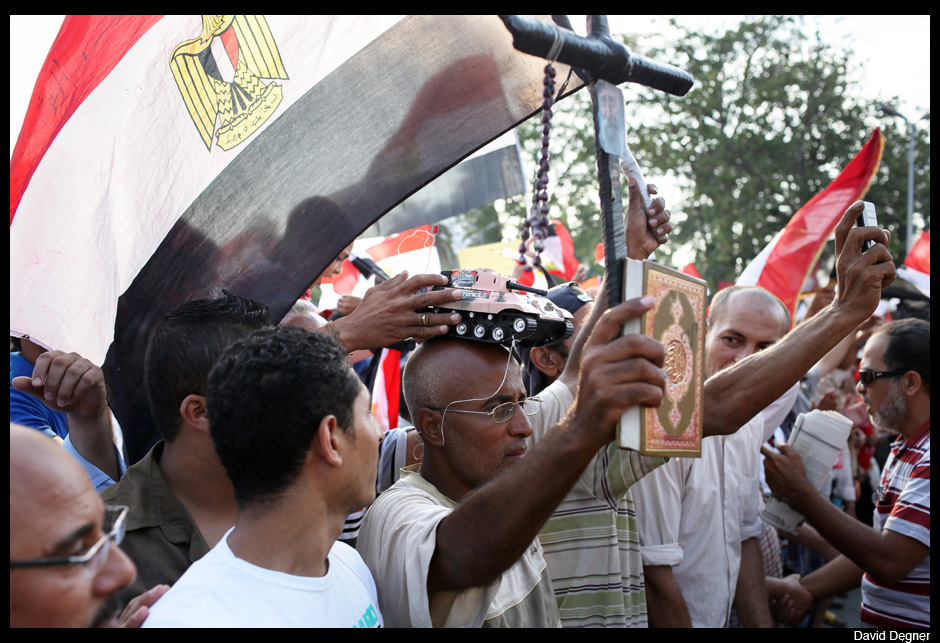
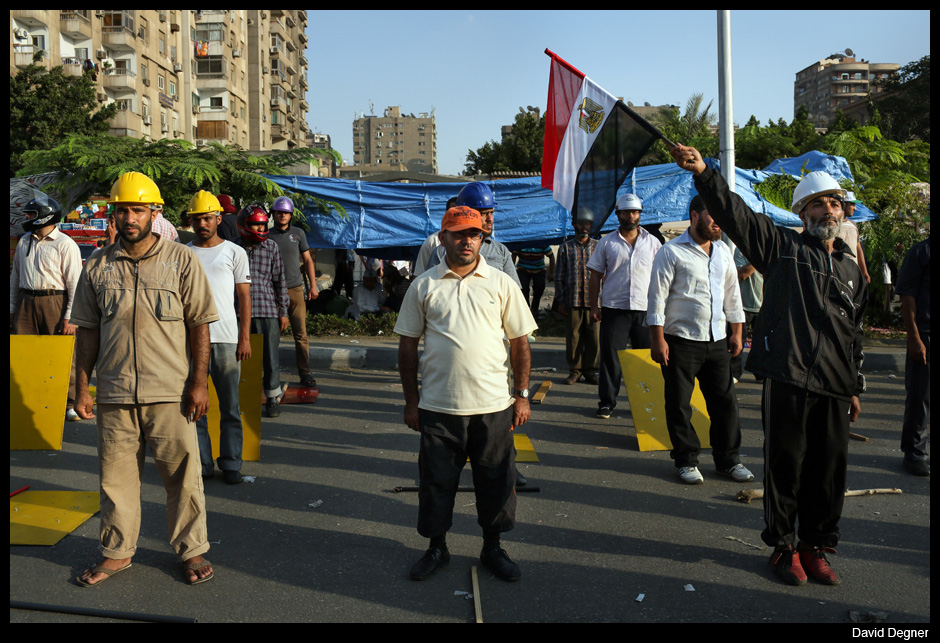
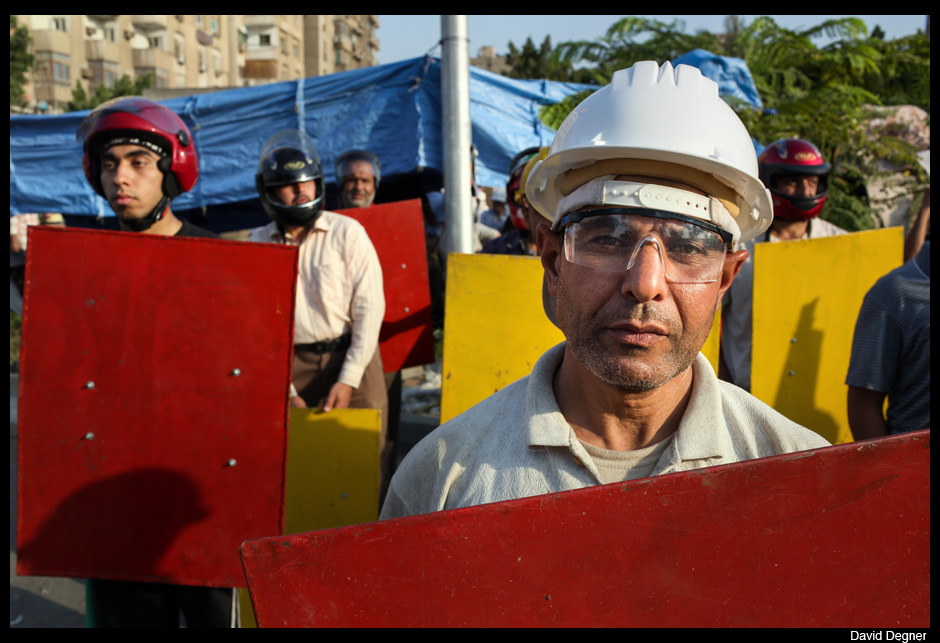
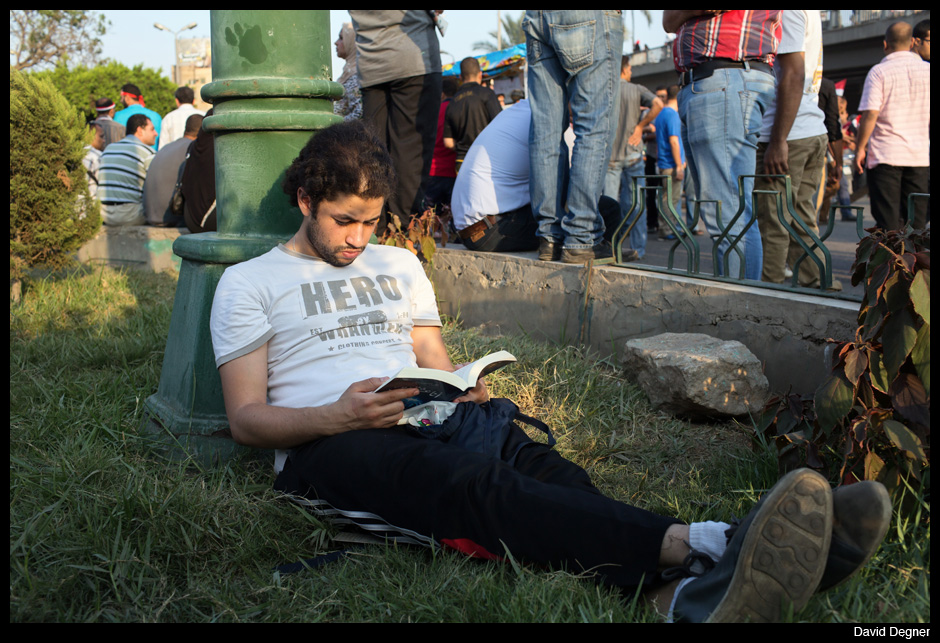
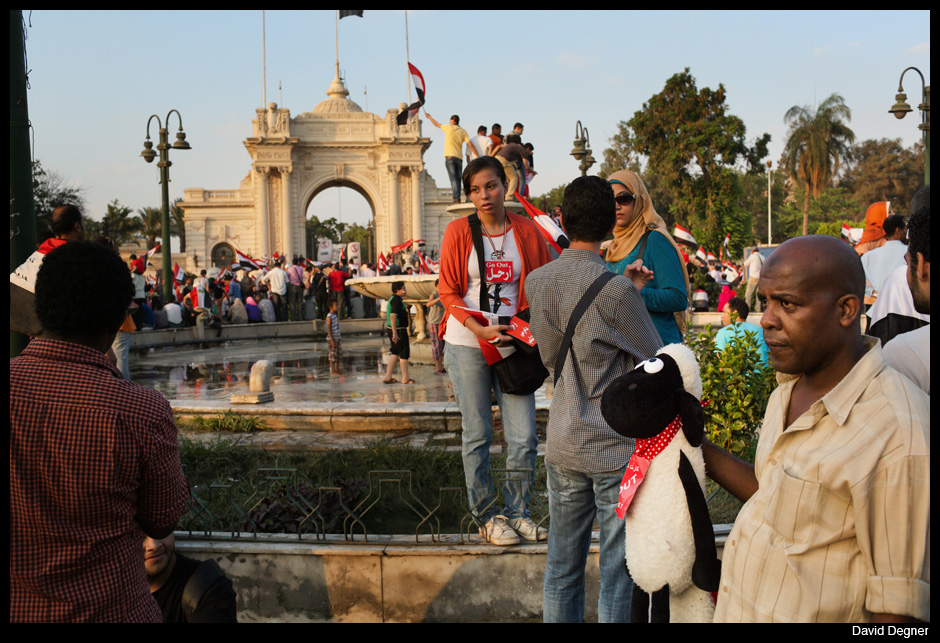
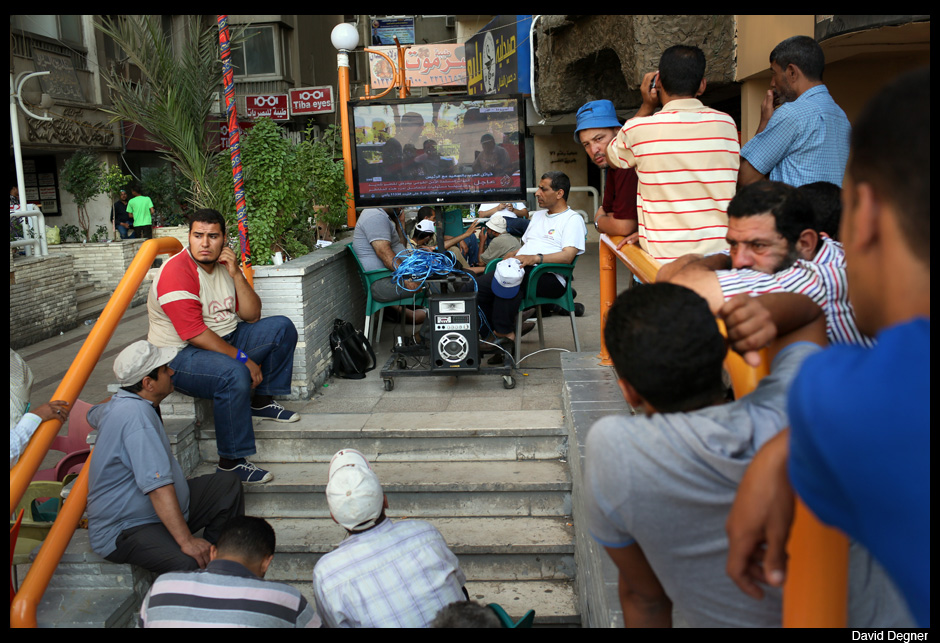
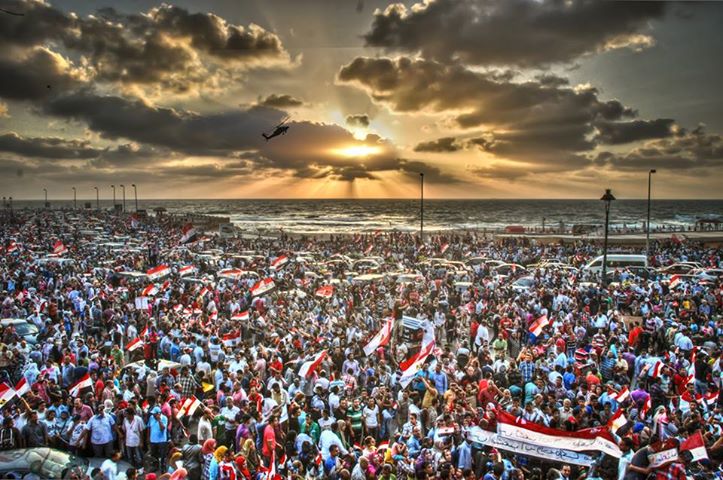
Reactions